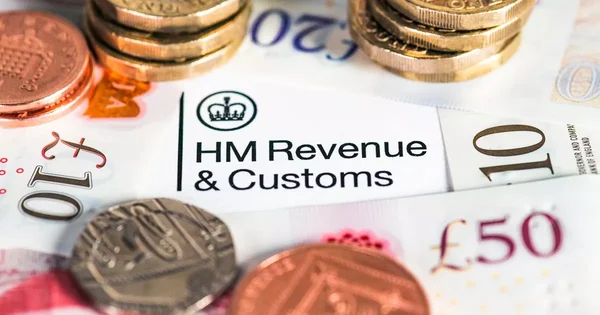All You Need to Know
Many people don’t realise that an individual taxpayer or UK taxpayer who has paid tax can get tax relief on donations they made years ago. HMRC actually lets you claim back money for donations made in the last four tax years, provided you have been taxed and meet the necessary requirements.
This could mean hundreds or thousands of pounds back in your pocket. Furthermore, only qualifying donations with a valid Gift Aid declaration are eligible for this relief, and the process is more straightforward than most people think.
Let’s walk through exactly how to do this and what you need to know. There is a difference between claiming for the current tax year and a previous tax year, so it’s important to understand the rules for each. Additionally, we’ll cover the common mistakes that could cost you money.
Be sure to complete all necessary steps to ensure your claim is successful.
What does charity donation tax relief for previous years actually mean?
When you donate to charity in the UK, the basic rate tax relief goes straight to the charity through Gift Aid, provided the donor is a UK taxpayer and has made a valid Gift Aid declaration. However, if you’re a higher rate taxpayer, you can claim back even more money through tax relief.
The catch is that you need to claim this extra relief yourself it doesn’t happen automatically. Many donors miss out on this additional relief simply because they don’t know about it.
Previous year claims let you go back and reclaim relief on donations you made in earlier tax years. You can claim for donations made up to four years ago if you haven’t already claimed the relief. If you missed claiming in a previous year, you can amend your tax return to reclaim the Gift Aid tax relief.
This means you could be sitting on unclaimed tax refunds right now. Additionally, you can claim Gift Aid on eligible donations from previous years, and these claims can be substantial if you’ve been donating regularly over several years.

Which previous tax years can you claim for?
You can currently claim relief for donations made between 2020-21 and 2023-24. Each tax year runs from 6th April to 5th April the following year, which often catches people out. Donations made in the current tax year can sometimes be carried back to the previous tax year to maximize your tax relief.
You have four years from the end of each tax year to make your claim. After that, the window closes permanently and you can’t claim anymore.
The key thing to remember is you can only claim if you paid enough tax in that year. If you pay higher rate tax or additional rate tax, you may be eligible for additional tax relief on your charitable donations. Your tax relief can’t exceed the income tax you actually paid during that period.
Furthermore, if you’re a Scottish taxpayer, the relief rates may differ slightly depending on your income band. Qualifying charitable donations are tax deductible and can help reduce your tax bill, sometimes resulting in tax free benefits. However, the claiming process remains essentially the same across the UK.
How do you gather all the paperwork you need?
Start by collecting all your donation receipts and Gift Aid forms from each relevant year. Make sure to gather evidence of qualifying donations and valid Gift Aid declarations, as only these are eligible for tax relief. Additionally, check your bank statements for regular monthly donations you might have forgotten about.
Contact charities directly if you’ve lost receipts they’re required to keep records of Gift Aid donations. Most charities are helpful and can provide donation summaries covering multiple years.
Remember, only donations from a UK taxpayer who is paying sufficient UK Income Tax or Capital Gains Tax are eligible for relief. You’ll also need proof you paid enough tax in each year you’re claiming for. This means getting your P60s or SA302 forms for those tax years from HMRC or your employer.
Organise everything by tax year to make the process much easier. Additionally, create a simple spreadsheet to track your donations and potential relief amounts for each year.

Understanding Payroll Giving and How It Affects Your Claim
Payroll Giving is a simple and tax-efficient way for UK taxpayers to support their favourite charities directly from their salary. With this scheme, your charitable donations are deducted from your gross pay before income tax is applied, which means you automatically receive tax relief at your highest rate. This not only reduces your taxable income but also ensures that more of your money goes straight to the charities you care about.
By donating through Payroll Giving, you can claim tax relief without the need for extra paperwork or a self assessment tax return. This method is especially beneficial for higher rate taxpayers, as the relief is applied automatically, making it easier to support charities while reducing your overall tax bill. If you’re considering Payroll Giving, speak to your employer or payroll department to set it up and ensure your donations qualify for tax relief. Supporting charities through Payroll Giving is a straightforward way to make your donations go further and enjoy the benefits of tax relief at the same time.
Capital Gains Tax Considerations for Charity Donations
When making charitable donations, it’s worth considering how capital gains tax (CGT) can impact your tax relief. Capital gains tax is charged on the profit you make when selling certain assets, such as shares, property, or investments. If you choose to donate assets or the proceeds from their sale to a registered charity, you may be able to claim tax relief and reduce your overall tax liability.
Under the Gift Aid scheme, charities can claim an extra 25% on your donation, but you must have paid enough income tax or capital gains tax in the relevant tax year to cover the amount reclaimed by the charity. For example, if you sell shares at a profit and donate the proceeds, you can claim tax relief on the donation, but you’ll also need to ensure you’ve paid sufficient capital gains tax or income tax for the donation to qualify under Gift Aid rules.

What's the step-by-step process for making your claim?
If you don’t normally do Self Assessment, you’ll use form P87 for previous year claims. However, if you already file Self Assessment as an individual taxpayer, you must complete all relevant forms to claim relief and can add previous year donations to your return instead.
Work out your tax rate for each year this determines how much you can claim back. Higher rate taxpayers (40%) can claim back an extra 20% on their donations, whilst additional rate taxpayers (45%) can claim back 25%. If you discover an error or missed donations, you can amend your tax return to include them and maximize your tax benefits.
Submit your claim with all supporting documents and wait 6-8 weeks for processing. Only qualifying donations are eligible for relief. HMRC will either send you a cheque or adjust your tax code to spread the refund over future months.
One client I worked with recently discovered they’d missed claiming relief on £8,000 of donations over three years. They received a £1,600 refund within two months of submitting their P87 form.
How much money could you actually get back?
Let’s say you donated £1,000 in a previous year and you’re a higher rate taxpayer. The charity already received £250 in basic rate relief, making your total donation worth £1,250. The difference between the basic rate relief reclaimed by the charity and your higher rate means you can claim additional tax relief.
You can reclaim an extra £250 (20% of the gross £1,250 donation) by submitting the appropriate claim to HMRC. If you donated regularly over several years, these amounts add up quickly and substantially.
Some people discover they’re owed thousands in unclaimed relief, particularly those who donate through payroll giving or regular direct debits. The exact amount depends on your tax rate and total donations in each year. You may be able to claim additional tax relief if your tax rate changed between years, so calculate each year separately.
However, even small donations can add up to meaningful refunds over multiple years.
What mistakes should you watch out for?
Don’t claim if you weren’t a UK taxpayer or weren’t paying enough UK Income Tax or Capital Gains Tax that year to cover the relief amount. Only UK taxpayers who are paying sufficient tax on their income or gains can claim relief. Additionally, check donation dates carefully—the tax year ends on 5th April, not 31st December as many assume.
Make sure you completed a valid Gift Aid declaration for all donations you’re claiming. A Gift Aid declaration is required for each donation to allow the charity to reclaim tax, and without it, your donation will not be eligible. Furthermore, avoid claiming for the same donation twice through different methods or tax years.
Keep detailed records in case HMRC asks questions about your claim later. Remember, you can only claim relief up to the amount of tax you paid (taxed income or gains) in each relevant year.
Another common mistake is assuming all donations qualify only qualifying cash donations and certain shares or securities to registered charities count. However, most standard charitable donations will qualify if properly documented and made from taxed income.

Ready to claim your charity tax relief?
Claiming charity donation tax relief for previous years is simpler than most people think. The hardest part is usually gathering all your paperwork together and organising it properly.
Note: Companies, sole traders, and partnerships can also benefit from tax relief on charitable donations. Such donations may be treated as business expenses or be charitable donations tax deductible, depending on your business structure. Sponsorship payments, donations to community amateur sports clubs, and charity events may also qualify for relief under certain conditions. Charities may be eligible for VAT relief on certain goods and services. Make sure to complete all necessary steps and forms to maximise your claim.
Once you have everything organised, the claiming process is straightforward and often profitable. Don’t miss out on money that’s rightfully yours - start checking your records today.
Furthermore, remember that this is money you’re entitled to, not a favour from HMRC. Additionally, claiming relief helps you maximise the impact of your charitable giving whilst reducing your tax burden.
Pie is the UK’s first personal tax app, helping working people handle their tax responsibilities with ease. Our platform combines bookkeeping, real-time tax calculations, simplified returns, and expert guidance all in one place - making it the perfect tool to manage your charity donation claims and maximise your tax savings.











